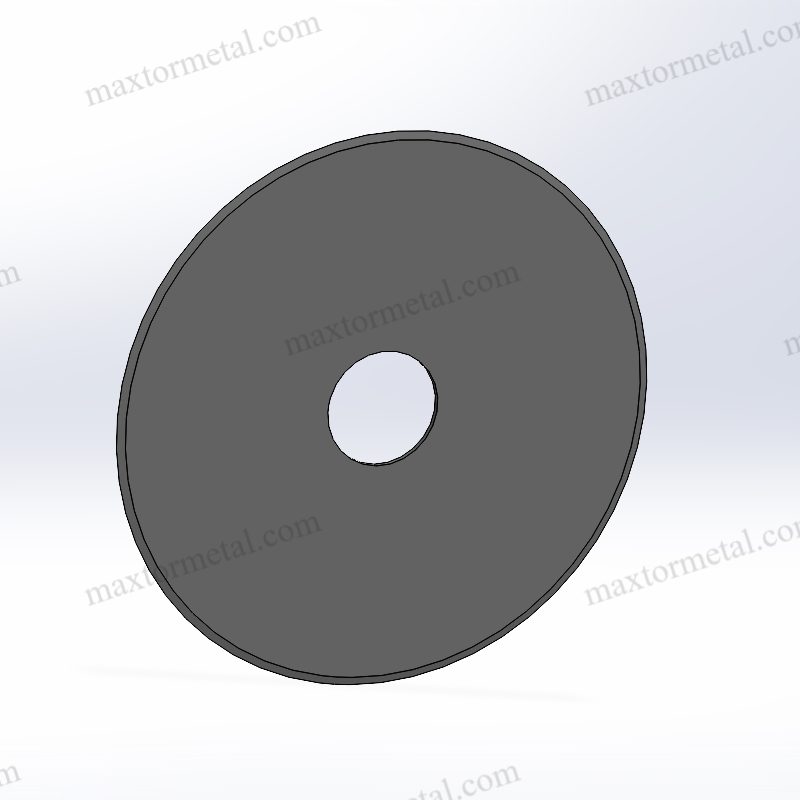
Behalten Sie Ihre Kreismesserklinge Scharfe Klingen sind wichtig für die Sicherheit. Sie sparen Geld und verbessern die Leistung. Die Pflege von Industrieklingen macht das Schneiden einfacher und sicherer. Regelmäßige Kontrollen helfen, Schäden oder Verschleiß frühzeitig zu erkennen. Dieser einfache Schritt vermeidet Unfälle und verlängert die Lebensdauer der Klingen. Die Verwendung des richtigen Kühlmittels und Öls ist ebenfalls sehr hilfreich. Tragen Sie bei Arbeiten an Ihren Klingen immer Schutzausrüstung. Dies schützt Sie vor Verletzungen. Eine gute Wartung sorgt für die einwandfreie Funktion der Werkzeuge und spart langfristig Geld. Benötigen Sie eine benutzerdefinierte Klinge oder Ratschläge? Kontakt Nanjing MetalHeute!
Die wichtigsten Erkenntnisse
- Überprüfen Sie die Klinge Ihres Rundmessers immer auf Beschädigungen. Das frühzeitige Erkennen kleiner Risse oder Absplitterungen verhindert Unfälle und verlängert die Lebensdauer der Klinge.
- Wählen Sie die richtige Klinge für Ihren Schnitt. Die Verwendung der richtigen Klinge erleichtert das Schneiden und verhindert einen schnellen Verschleiß. Das spart Zeit und Geld.
- Schärfen Sie Ihre Klinge regelmäßig. Wenn sie scharf ist, funktioniert sie besser und Sie müssen sie nicht so oft ersetzen.
Die Wahl der richtigen Kreismesserklinge
Passen Sie die Klinge an das Material an
Auswählen der das richtige Sägeblatt für Ihr Material ist wichtig. Es ermöglicht Ihnen glatte Schnitte und verlängert die Lebensdauer der Klingen. Verschiedene Materialien erfordern unterschiedliche Klingentypen. Zum Beispiel Schnellarbeitsstahl (HSS) ist ideal für weiche Materialien. Härtere Materialien benötigen Hartmetallklingen. Spezielle Beschichtungen wie Titannitrid (TiN) Die Beschichtungen sorgen dafür, dass die Klingen länger scharf bleiben. Sie verringern Verschleiß und Reibung. Das spart Zeit und Geld, da Reparaturen und Verzögerungen reduziert werden.
Tipp: Überprüfen Sie vor der Wahl eines Sägeblatts immer, welches Material Sie schneiden. Die Verwendung des falschen Sägeblatts kann zu Schäden oder Unfällen führen.
Berücksichtigen Sie die Qualität und den Hersteller der Klinge
Die Qualität der Klingen ist wichtiger als Sie denken. Gute Klingen schneiden sauberer und halten länger. Studien zeigen, dass präzise Klingen die Fehlerquote um 70 % senken. Das bedeutet weniger Materialverschwendung. Robuste Klingen fallen zudem seltener aus und sind kostengünstiger in der Wartung. Unternehmen, die Wert auf Qualität legen, produzieren langlebigere Klingen.
Sicherheitshinweis: Tragen Sie beim Arbeiten mit Klingen immer Schutzausrüstung. Selbst die besten Klingen können ohne Schutz gefährlich sein.
Vorteile von kundenspezifischen Industrieklingen
Spezialklingen werden für spezielle Aufgaben hergestellt. Sie sind für spezielle Aufgaben wie das Schneiden von Kunststoff, Gummi oder Chemikalien konzipiert. Zum Beispiel:
| Industrie | Wichtige Anwendungsfälle | Datenpunkt |
|---|---|---|
| Gesundheitspflege | Gewebeschneiden | Keramikskalpelle verursachten 20% weniger Gewebeschäden als solche aus Metall. |
| Herstellung | Schneiden von Kunststoff | Keramikklingen schneiden Abfall durch 12% aufgrund besserer Präzision. |
| Chemische Industrie | Schneidchemikalien | Keramikklingen blieben in Säure über 30 Tage lang scharf. |
Maßgefertigte Klingen verbessern die Genauigkeit, reduzieren Abfall und erhöhen die Sicherheit. Sie sind eine intelligente Wahl für Branchen, in denen Spitzenleistung gefragt ist.
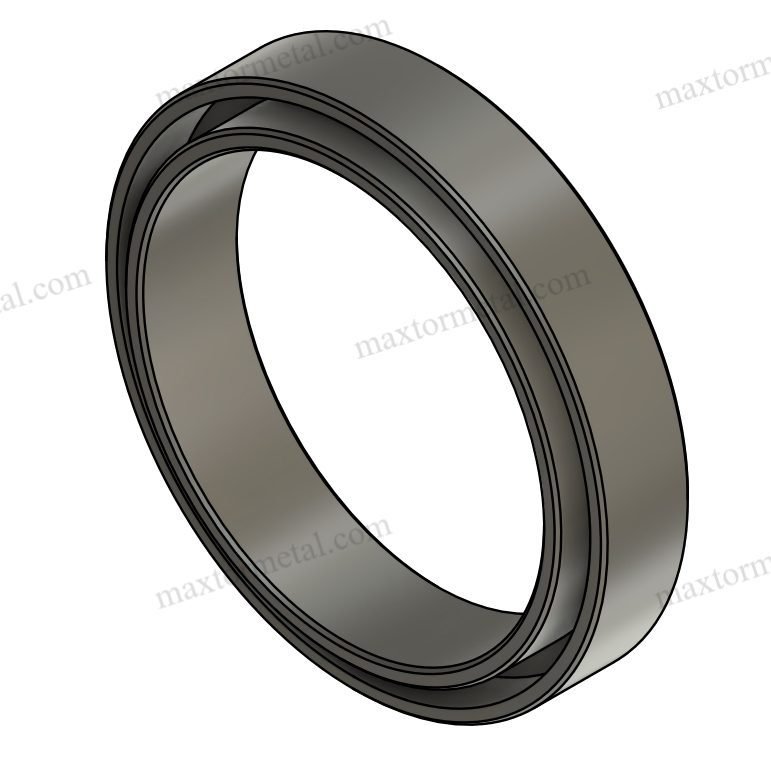
Richtige Installation und Einrichtung
Einrichten Ihres Kreismesserklinge Die richtige Vorgehensweise ist entscheidend. Eine falsche Installation kann zu schlechten Schnitten, schnellerem Verschleiß und sogar zu Sicherheitsproblemen führen. Befolgen Sie diese Schritte, um sicherzustellen, dass Ihr Sägeblatt einwandfrei funktioniert.
Ausrichtung sorgfältig prüfen
Die korrekte Ausrichtung ist für eine gute Klingenleistung sehr wichtig. Wenn die Klinge nicht ausgerichtet ist, kann sie ungleichmäßig schneiden oder das Material beschädigen. Stellen Sie sicher, dass die Klinge die Rolle auf beiden Seiten gleichmäßig berührt. Überprüfen Sie den Winkel mit Hilfsmitteln wie einer Wasserwaage oder einer digitalen Wasserwaage auf Genauigkeit.
| Schritt | Details |
|---|---|
| Pegelanpassung | Halten Sie den Pegel innerhalb +/- 0,030 Zoll für beste Ergebnisse. |
| Klingenpositionierung | Stellen Sie sicher, dass die Klinge beide Enden der Rolle gleichmäßig berührt. |
| Ausrichtungswerkzeuge | Verwenden Sie digitale Wasserwaagen, Schablonen- oder Wasserwaagen, um eine präzise Ausrichtung zu erreichen. |
Tipp: Nehmen Sie sich Zeit beim Ausrichten der Klinge. Eile kann zu kostspieligen Fehlern führen.
Verwenden Sie für die Installation die richtigen Werkzeuge
Mit dem richtigen Werkzeug wird die Montage einfacher und sicherer. Tragen Sie Schutzhandschuhe und eine Schutzbrille, um sich vor scharfen Kanten und herumfliegenden Teilen zu schützen. Ein Drehmomentschlüssel hilft, die Schrauben richtig anzuziehen – weder zu locker noch zu fest. Reinigen Sie den Montagebereich mit Bürsten und Rostlösern für einen sicheren Sitz.
| Werkzeug/Ausrüstung | Zweck |
|---|---|
| Schutzhandschuhe | Schützen Sie Ihre Hände vor scharfen Kanten |
| Schutzbrille | Halten Sie Schmutz von Ihren Augen fern |
| Drehmomentschlüssel | Schrauben auf das richtige Maß festziehen |
| Reinigungsbürste & Tuch | Reinigen Sie den Montagebereich der Klinge |
| Rostlöser & Schmiermittel | Entfernen Sie Rost und sorgen Sie für eine reibungslosere Installation |
Erinnerung: Schalten Sie die Maschine aus Sicherheitsgründen immer aus und verriegeln Sie sie, bevor Sie mit der Installation beginnen.
Stellen Sie sicher, dass alles fest ist
Überprüfen Sie nach dem Ausrichten und Einbauen des Sägeblatts, ob es fest sitzt. Lose Schrauben können zu Wackeln, ungleichmäßigen Schnitten und schnellerem Verschleiß führen. Ziehen Sie die Schrauben gemäß Herstellerempfehlung mit einem Drehmomentschlüssel fest. Montieren Sie modulare Sägeblattschutzvorrichtungen ordnungsgemäß, um Sicherheit und Leistung zu verbessern.
| Beweisbeschreibung | Wichtige Punkte |
|---|---|
| UL RP 3002 Richtlinien | Die korrekte Installation von Sicherheitsfunktionen verbessert die Leistung. |
| Modularer Klingenschutzaufbau | Die ordnungsgemäße Installation des Schutzes gewährleistet Sicherheit und eine bessere Klingenfunktion. |
Profi-Tipp: Drehen Sie die Klinge nach dem Festziehen von Hand, um zu prüfen, ob sie sich reibungslos und ohne Wackeln bewegt.
Regelmäßige Wartungspraktiken für Kreismesserklingen
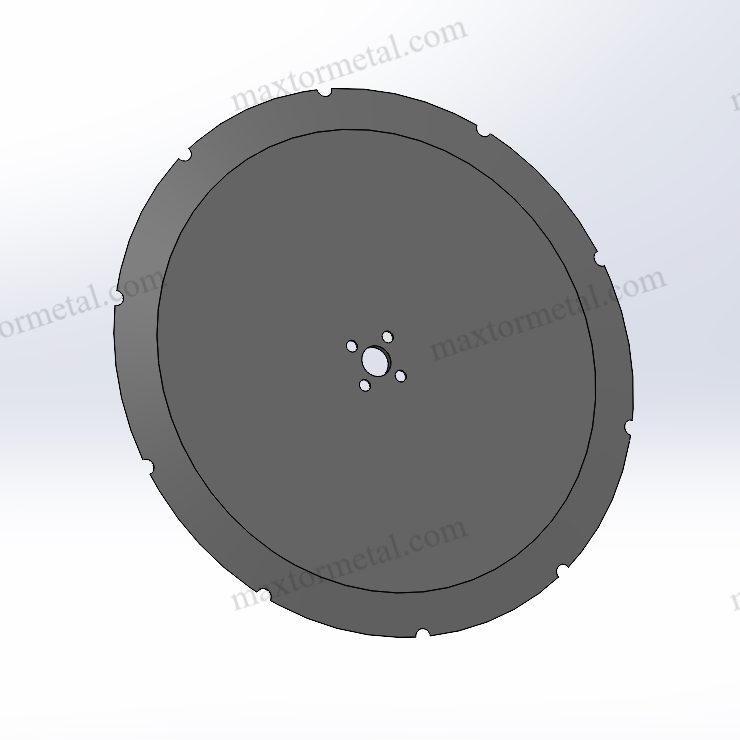
Kümmern Sie sich um Ihre Kreismesserklinge ist wichtig. Regelmäßige Wartung trägt dazu bei, dass es länger hält, besser schneidet und Geld für Ersatz spart.
Auf Schäden prüfen
Durch die Überprüfung Ihrer Klinge können Sie Probleme frühzeitig erkennen. Beschädigte Klingen können schlecht schneiden, weniger effizient arbeiten oder sogar Unfälle verursachen. Folgendes sollten Sie überprüfen:
Kleine Kerben erkennen
Kleine Kerben an der Schneide können die Schneidleistung beeinträchtigen. Berühren Sie die Schneide vorsichtig mit dem Finger, um raue Stellen zu finden. Selbst kleine Kerben können das Material zerreißen, anstatt sauber zu schneiden.
Suchen Sie nach Rissen
Risse sind gefährlich, da sie die Klinge schwächen. Verwenden Sie eine helle Lampe oder eine Lupe, um die Oberfläche auf Risse zu prüfen.
Untersuchen Sie die Kante
Eine stumpfe oder unebene Schneide erschwert das Schneiden. Achten Sie auf Anzeichen von Stumpfheit oder Ungleichmäßigkeit. Wenn die Schneide nicht scharf ist, ist es Zeit, sie zu schärfen oder nachzuschleifen.
Tipp: Verwenden Sie Tools wie Ultraschallprüfgeräte um versteckte Schäden zu finden. Diese Werkzeuge helfen, die Klingen sicher und effizient zu halten.
Reinigen Sie die Klinge
Durch die Reinigung bleibt Ihre Klinge scharf und funktionstüchtig. Eine schmutzige Klinge kann überhitzen, Reibung verursachen und schlechte Schnitte verursachen.
Entfernen Sie Schmutz
Reinigen Sie das Sägeblatt nach Gebrauch von festsitzenden Rückständen. Verwenden Sie eine weiche Bürste oder ein Tuch, um Sägemehl, Metallsplitter oder andere Partikel zu entfernen.
Verwenden Sie spezielle Reiniger
Bei hartnäckigem Schmutz verwenden Sie Klingenreiniger. Einige Systeme, wie die von Gillette, reinigen gut, ohne Flecken zu hinterlassen.
Vollständig trocknen
Trocknen Sie die Klinge nach der Reinigung immer ab. Nasse Klingen können rosten und dadurch geschwächt werden. Verwenden Sie ein fusselfreies Tuch oder lassen Sie die Klinge an einem sauberen Ort trocknen.
Notiz: Durch regelmäßiges Reinigen Ihrer Klinge müssen Sie diese nicht mehr schärfen, und Sie sparen Zeit und Geld.
Häufig schmieren
Schmierung verringert Reibung und Hitze und trägt so zur längeren Lebensdauer der Klinge bei. So geht's richtig:
Wählen Sie das richtige Schmiermittel
Verschiedene Sägeblätter benötigen unterschiedliche Schmiermittel. Wählen Sie ein Schmiermittel, das zu Ihrem Sägeblatt und den Bedingungen passt. Beispielsweise eignet sich Gleitfett gut für kalte Bereiche.
| Fetttyp | Temperatur (°C) | Durchmesser der Kugelnarbe (µm) | Reibung (µ) |
|---|---|---|---|
| Fett A | -40 | 250 | 0.6 |
| Fett D | -40 | >500 | 0.8 |
Gleichmäßig verteilen
Tragen Sie das Schmiermittel gleichmäßig auf der Klinge auf. Eine ungleichmäßige Verteilung kann zu Verschleiß und Hotspots führen.
Übertreiben Sie es nicht
Zu viel Schmiermittel kann Schmutz anziehen und die Klinge verstopfen. Verwenden Sie nur so viel, dass eine dünne Schicht entsteht.
Profi-Tipp: Schmieren Sie Ihre Klinge nach der Reinigung, um sie in einem guten Zustand zu halten.
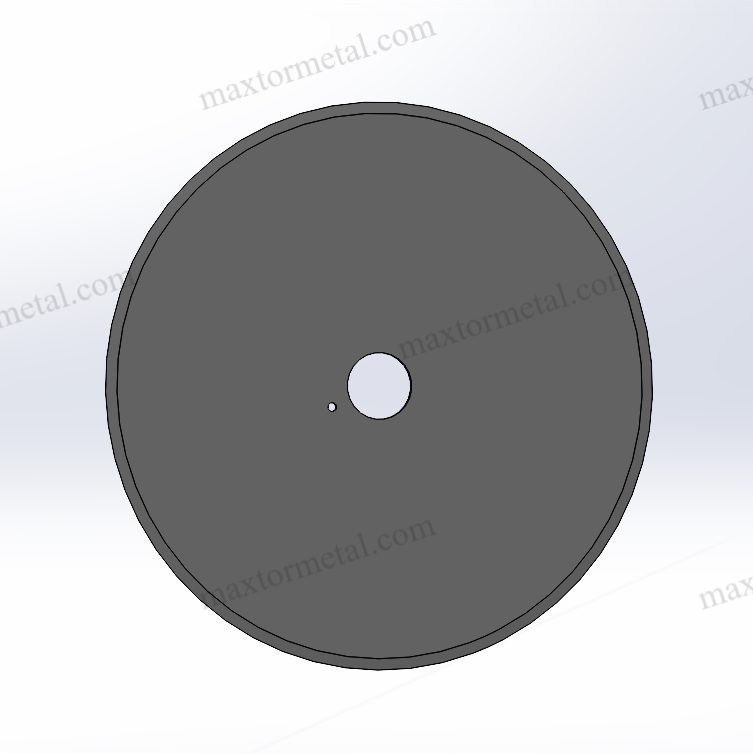
Blade Performance ansehen
Wenn Sie die Funktionsweise Ihres Sägeblatts im Auge behalten, können Sie Probleme frühzeitig erkennen. Folgendes sollten Sie beachten:
Schnittqualität
Achten Sie darauf, ob die Klinge langsamer schneidet oder raue Kanten hinterlässt. Dies könnte bedeuten, dass sie geschärft oder nachgeschliffen werden muss.
Seltsame Geräusche
Seltsame Geräusche, wie etwa ein Quietschen, können darauf hinweisen, dass die Klinge beschädigt oder falsch ausgerichtet ist.
Nutzung anpassen
Wenn Sie Probleme feststellen, ändern Sie die Schnittgeschwindigkeit oder den Druck. Werkzeuge wie Vibrationssensoren kann bei der Überwachung des Klingenzustands helfen.
| Werkzeug/Technologie | Zweck | Vorteile |
|---|---|---|
| Akustische Monitore | Überprüfen Sie den Zustand der Klinge | Bessere Leistung |
| Vibrationssensoren | Überwachen Sie den Gerätezustand | Weniger Ausfälle |
| KI-Analyse | Daten analysieren | Weniger Ausfallzeiten, mehr Einsparungen |
Klingen richtig lagern
Die richtige Lagerung Ihrer Klingen ist ebenso wichtig wie deren Pflege. Eine unsachgemäße Lagerung kann zu Rost, Stumpfheit oder Beschädigung führen.
Verwenden Sie Klingenabdeckungen
Decken Sie Ihre Klinge beim Aufbewahren immer ab. Abdeckungen schützen die Schneide und verhindern versehentliche Schnitte.
An trockenen Orten aufbewahren
Lagern Sie die Klingen an einem trockenen, kühlen Ort. Feuchtigkeit kann Rost verursachen und ihre Lebensdauer verkürzen.
Getrennt von anderen Tools
Lassen Sie die Klingen nicht mit anderen Werkzeugen in Berührung kommen. Dies kann zu Kratzern oder Abstumpfung führen. Verwenden Sie zur sicheren Aufbewahrung ein spezielles Gestell oder eine Box.
Erinnerung: Durch eine gute Lagerung bleiben die Klingen einsatzbereit und ihre Lebensdauer wird verlängert.
Schärftechniken und -pläne
Behalten Sie Ihre Kreismesserklinge Schärfe ist sehr wichtig. Sie gewährleistet saubere Schnitte und sicheres Arbeiten. Regelmäßiges Schärfen verbessert die Funktion der Klinge und verlängert ihre Lebensdauer. Erfahren Sie, wie Sie erkennen, wann Schärfen erforderlich ist, welche Werkzeuge Sie verwenden und wie Sie einen Schärfplan erstellen.
Anzeichen dafür, dass Ihre Klinge geschärft werden muss
Wie können Sie feststellen, ob Ihre Klinge geschärft werden muss? Achten Sie auf diese Anzeichen:
- Das Schneiden fühlt sich schwieriger an und Sie benötigen mehr Kraft.
- Die Klinge weist stumpfe oder unebene Stellen auf.
- Materialien haften an der Klinge, anstatt reibungslos zu gleiten.
- Schnitte sind rau oder hinterlassen gebogene Kanten.
- Die Klinge lässt sich nicht mehr so leicht durch das Material bewegen.
Wenn Sie diese Probleme bemerken, schärfen Sie Ihre Klinge bald. Wenn Sie sie ignorieren, kann es zu schlechten Schnitten und einer Beschädigung Ihrer Klinge kommen.
Tipp: Überprüfen Sie Ihre Klinge regelmäßig auf diese Anzeichen. Das frühzeitige Erkennen von Stumpfheit spart Zeit und Geld.
Verwenden Sie die richtigen Schärfwerkzeuge
Die Verwendung der richtigen Werkzeuge ist entscheidend für das Schärfen Ihrer Klinge. Die falschen Werkzeuge können die Klinge beschädigen oder ungleichmäßig machen. Hier sind einige gute Möglichkeiten:
- Dateien: Halten Sie die Kante gleichmäßig, indem Sie gleichmäßigen Druck ausüben.
- Schleifsteine: Verwenden Sie für Genauigkeit unterschiedliche Körnungen. Fügen Sie Wasser oder Öl hinzu, um eine Überhitzung zu vermeiden.
- Schleifscheiben: Hervorragend geeignet für schwieriges Schärfen, benötigt aber Kühlung zum Schutz der Klinge.
- Honführungen: Hilft Anfängern, beim Schärfen den richtigen Winkel einzuhalten.
- Schärfvorrichtungen: Ermöglicht präzises Schärfen mit einstellbaren Winkeln.
- Streichriemen: Perfekt zum Polieren der Klinge für ein scharfes Finish.
Auch elektrische Schärfer sind eine gute Wahl. Sie sind einfach zu bedienen und liefern gleichbleibende Ergebnisse. Eine gut geschärfte Klinge schneidet besser, hält länger und verringert das Unfallrisiko.
Profi-Tipp: Wenn Sie noch keine Erfahrung mit dem Schärfen haben, beginnen Sie mit einer Schleifführung oder -vorrichtung. Diese Werkzeuge helfen Ihnen, Fehler zu vermeiden und den richtigen Winkel zu finden.
Legen Sie einen regelmäßigen Schärfplan fest
Ein Schärfplan hält Ihre Klinge in Topform. So richten Sie einen ein:
- Nutzung verfolgen: Notieren Sie, wie oft Sie die Klinge verwenden. So wissen Sie, wann sie geschärft werden muss.
- Überprüfen Sie die Gerätekapazität: Wenn Sie Schleifwerkzeuge verwenden, prüfen Sie, wie viel sie bewältigen können. Beispielsweise hilft die Verwendung von 75% bei der Bestimmung der Schleifhäufigkeit.
- Arbeitsbelastung abgleichen: Passen Sie Ihren Zeitplan an die Arbeitsbelastung des Sägeblatts an.
Ein regelmäßiger Plan verhindert Stumpfheit und reduziert den Bedarf an Klingenwechseln. Studien zeigen, dass feiner geschärfte Klingen länger halten. Zum Beispiel: Klingen, die mit einer Körnung von 600 geschärft wurden, bleiben länger scharf als solche mit einer Körnung von 180.
Erinnerung: Regelmäßiges Schärfen verbessert die Leistung und verlängert die Lebensdauer Ihrer Klinge.
Wenn Sie diese Schritte befolgen, können Sie Ihre Kreismesserklinge scharf und effektiv. Die richtigen Werkzeuge und ein fester Zeitplan machen den Unterschied.

Anwendungstipps für eine längere Lebensdauer Ihres Sägeblatts
Passen Sie Schnittgeschwindigkeiten und Vorschübe an
Die richtige Einstellung Schnittgeschwindigkeit und Vorschub verlängert die Lebensdauer Ihrer Klinge. Zu schnelles Schneiden erhitzt die Klinge und verschleißt schnell. Zu langsames Schneiden kostet Zeit und verursacht raue Kanten. Finden Sie die optimale Geschwindigkeit für Ihr Material und Ihren Klingentyp.
Studien zeigen, dass die Schnitttiefe eine große Rolle spielt. Sie beeinflusst die Schnittkraft stärker als Geschwindigkeit oder Vorschub. Eine ausgewogene Winkelgeschwindigkeit reduziert zudem den Verschleiß. So wirken sich diese Faktoren auf die Sägeblattleistung aus:
| Befund | Beschreibung |
|---|---|
| 1 | Die Schnitttiefe beeinflusst die Schnittkraft am meisten. Durch die Kontrolle dieser Tiefe können Sie Schäden am Sägeblatt vermeiden. |
| 2 | Hohe Hitze in der Nähe der Kante führt zu Verschleiß. Dieser Bereich erfordert besondere Pflege. |
| 3 | Die Winkelgeschwindigkeit beeinflusst die Schnitttemperatur. Halten Sie sie konstant, um Schäden zu vermeiden. |
| 4 | Durch die Verwendung der richtigen Einstellungen werden Kraft und Hitze verringert, wodurch die Klingen länger halten. |
Tipp: Testen Sie Ihre Einstellungen zunächst an einem kleinen Stück. So vermeiden Sie Fehler und sparen Material.
Wenden Sie nicht zu viel Kraft an
Zu starker Druck auf die Klinge kann Probleme verursachen. Übermäßiger Druck erzeugt Reibung, die zu Hitze und stumpfen Kanten führt. Außerdem kann die Klinge verbogen oder gebrochen werden. Überlassen Sie die Arbeit der Klinge, anstatt sie zu zwingen. Eine scharfe Klinge schneidet auch ohne zusätzlichen Druck reibungslos.
Wenn die Klinge ruckelt, halten Sie an und überprüfen Sie sie. Möglicherweise muss sie gereinigt, geschärft oder geölt werden. Gewaltsames Arbeiten an einer stumpfen Klinge kann ihre Lebensdauer verkürzen.
Profi-Tipp: Üben Sie beim Schneiden einen gleichmäßigen Druck aus. Dadurch bleibt die Klinge scharf und es werden glatte Schnitte gewährleistet.
Verwenden Sie die Klinge richtig
Jede Klinge ist für eine bestimmte Aufgabe konzipiert. Die Verwendung für die falsche Aufgabe kann sie beschädigen und Ihre Materialien ruinieren. Verwenden Sie beispielsweise keine Holzklinge zum Schneiden von Metall oder Kunststoff. Sie funktioniert nicht gut und kann brechen.
Experten empfehlen, diese Richtlinien zu befolgen:
| Richtlinie | Beschreibung |
|---|---|
| Bestimmungsgemäße Verwendung | Verwenden Sie Klingen nur für den vorgesehenen Zweck und nicht als Ersatz für andere Werkzeuge. |
| Materialgrenzen | Manche Sägeblätter können bestimmte Materialien, wie etwa Schaumstoffplatten, nicht verarbeiten. |
| Router-Jobs | Verwenden Sie zum Fräsen keine Sägeblätter anstelle von Oberfräsen. Verwenden Sie die richtigen Werkzeuge. |
Erinnerung: Lesen Sie vor der Verwendung einer Klinge immer die Anweisungen des Herstellers. Dieser einfache Schritt spart Zeit, Geld und Mühe.
Wenn Sie diese Tipps befolgen, werden Sie sorgen Sie für eine längere Lebensdauer Ihrer Klinge und erzielen Sie bessere Ergebnisse aus Ihren Projekten.
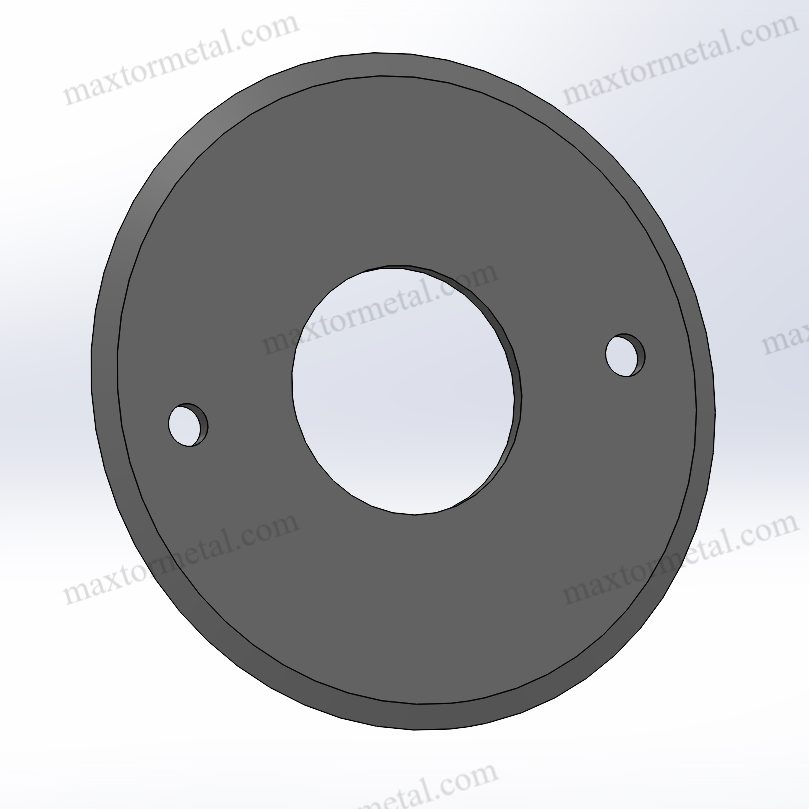
Erweiterte Tipps zur ordnungsgemäßen Wartung von Industrieklingen
Verwenden Sie Schutzbeschichtungen
Schutzbeschichtungen Sie tragen dazu bei, dass Rotorblätter länger halten, indem sie Schäden verhindern. Diese Beschichtungen schützen vor Verschleiß, Rost und Umweltschäden. Beispielsweise werden in der Windenergieindustrie spezielle Beschichtungen verwendet, um Erosion durch Regen und Sonnenlicht zu verhindern.
| Wichtigste Ergebnisse | Beschreibung |
|---|---|
| Erosionsproblem | Die Rotorblätter von Windkraftanlagen unterliegen witterungsbedingtem Verschleiß. |
| Beschichtungsentwicklung | Zur Verbesserung der Klingenfestigkeit wurden starke Beschichtungen hergestellt. |
| Testerfolg | Die Beschichtung hat in Tests besser funktioniert als andere Produkte. |
| Branchenrelevanz | Hilft Unternehmen im Bereich Windkraft und Rotorblattservice. |
Das Auftragen dieser Beschichtungen auf Ihre Klingen verringert den Wartungsaufwand und steigert die Leistung. So schützen Sie Ihre Werkzeuge ganz einfach und sparen Geld.
Nutzen Sie die Automatisierung für die Klingenpflege
Automatisierung macht die Klingenwartung einfacher und schneller. Maschinen mit Sensoren und intelligenten Systemen prüfen den Zustand der Klinge sofort. Sie erkennen Probleme wie Stumpfheit oder Fehlausrichtung frühzeitig. Automatische Schärfgeräte liefern zudem jedes Mal perfekte Ergebnisse und sparen so Aufwand.
Stellen Sie sich Automatisierung als Helfer bei der Klingenpflege vor. Sie arbeitet rund um die Uhr, vermeidet Fehler und hält die Klingen in einem hervorragenden Zustand. Zwar ist die Anschaffungskosten höher, langfristig spart sie aber Geld und Zeit.
Beauftragen Sie Experten für große Reparaturen
Manche Probleme mit den Rotorblättern lassen sich nur schwer selbst beheben. In solchen Fällen ist es ratsam, Experten zu beauftragen. Erfahrene Techniker verwenden moderne Werkzeuge und kennen die neuesten Reparaturmethoden. Sie können sowohl kleine als auch große Reparaturen durchführen.
- Expertenwissen: Fachleute werden in modernen Reparaturtechniken geschult.
- Schneller Service: Teams können Sie bei Bedarf schnell erreichen.
- Komplette Reparaturen: Sie beheben alle Arten von Klingenproblemen.
- Trainingsgeschwindigkeit: Experten erlernen neue Reparaturmethoden schnell.
- Reparaturgeschwindigkeit: Schnelle Fehlerbehebungen reduzieren Ausfallzeiten.
- Innovationsgeschwindigkeit: Neue Werkzeuge liefern bessere Reparaturergebnisse.
Durch die Zusammenarbeit mit Profis wird sichergestellt, dass Ihre Klingen richtig befestigt werden und in gutem Zustand bleiben.
Kümmern Sie sich um Ihre Kreismesserklinge ist sehr wichtig. Es schützt Sie und spart Geld. Regelmäßige Wartung verlängert die Lebensdauer und verbessert die Leistung der Klinge. Studien zeigen, dass eine frühzeitige Wartung der Klingen die Reparaturkosten senkt und die Produktion steigert.
| Beweisbeschreibung | Wichtige Punkte |
|---|---|
| Geld sparen durch frühzeitige Betreuung | Reduziert die Reparatur- und Wartungskosten und verbessert die Effizienz. |
| Probleme frühzeitig erkennen | Durch frühzeitiges Erkennen von Problemen können Fehlerbehebungen besser geplant und die Kosten kontrolliert werden. |
| Intelligente Entscheidungen mit Daten | Die Verwendung von Daten zu Rotorblattschäden trägt dazu bei, bessere Ausgabenentscheidungen zu treffen. |
Kunden berichten oft, wie ihnen die Wartung hilft. Ein Manager sagte: „Wir haben sofort Ergebnisse gesehen. Wir sparen jeden Monat zwei Tage Maschinenzeit.“ Ein anderer Vorgesetzter fügte hinzu: „Unsere Klingen bestehen jetzt problemlos die Sauberkeitstests. Sowohl die Sicherheit als auch die Leistung haben sich verbessert.“
| Metrisch | Standardklinge | Benutzerdefinierte Klinge |
|---|---|---|
| Monatlicher Austausch | 12 | 3 |
| Durchschnittliche Klingenkosten | $10 | $30 |
| Monatliche Gesamtkosten | ~$2,400 | ~$1,000 |
Der Kauf robuster Sägeblätter, wie die von Nanjing Metal, ist eine kluge Entscheidung. Mit 18 Jahren Erfahrung fertigen sie maßgeschneiderte Sägeblätter für Ihre Bedürfnisse. Wünschen Sie sich eine bessere Sägeblattleistung und eine längere Lebensdauer? Kontaktieren Sie noch heute die Experten von Nanjing Metal!
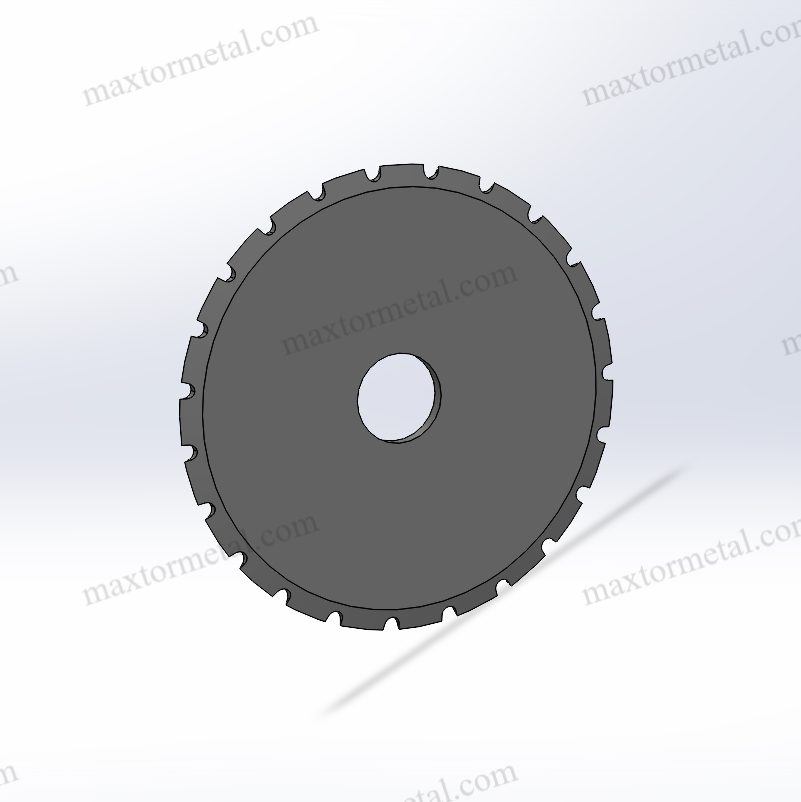
Häufig gestellte Fragen
Wie oft sollten Sie die Klinge Ihres Kreismessers überprüfen?
Überprüfen Sie Ihre Klinge jede Woche. Wöchentliche Kontrollen helfen, Schäden frühzeitig zu erkennen und die einwandfreie Funktion Ihrer Werkzeuge zu gewährleisten.
Kann man Industrieklingen selbst schärfen?
Ja, Sie können sie zu Hause mit Werkzeugen wie Feilen oder Schleifsteinen schärfen. Bei schwierigeren Schärfaufgaben bitten Sie Experten wie Nanjing Metal um Hilfe.
Wie sollten Sie Industrieklingen aufbewahren?
Bewahren Sie die Klingen an einem kühlen, trockenen Ort auf. Schützen Sie sie mit Klingenabdeckungen und lagern Sie sie getrennt von anderen Werkzeugen.
Tipp: Benötigen Sie kundenspezifische Industrieklingen? Kontaktieren Sie Nanjing Metal. Mit 18 Jahren Erfahrung liefern sie starke, hochwertige Klingen, die speziell für Sie angefertigt werden.



Eine Antwort